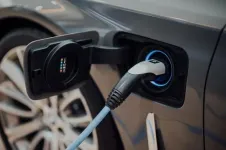Rice plant resists arsenic
Chinese-German research team discovers plant variant that largely neutralises the toxin
2021-03-02
(Press-News.org) The agricultural cultivation of the staple food of rice harbours the risk of possible contamination with arsenic that can reach the grains following uptake by the roots. In their investigation of over 4,000 variants of rice, a Chinese-German research team under the direction of Prof. Dr Rüdiger Hell from the Centre for Organismal Studies (COS) of Heidelberg University and Prof. Dr Fang-Jie Zhao of Nanjing Agricultural University (China) discovered a plant variant that resists the toxin. Although the plants thrive in arsenic-contaminated fields, the grains contain far less arsenic than other rice plants. At the same time, this variant has an elevated content of the trace element selenium.
The researchers explain that especially in agricultural regions in Asia, increasing amounts of the metalloid arsenic get into the groundwater through large-scale fertilisation or wastewater sludge, for example. Because rice is cultivated in submerged fields, the plants absorb a good deal of arsenic through the roots, thus giving the potential carcinogen a pathway into the food chain. According to Prof. Hell, arsenic pollution in some soils in Asia is now so high that it is also causing significant crop losses because the arsenic is poisonous to the plants themselves.
In the course of their research project, the scientists exposed over 4,000 rice variants to water containing arsenic and then observed their growth. Only one of the plants studied proved to be tolerant against the toxic metalloid. What biologically characterises the rice variant called astol1 is a so-called amino acid exchange in a single protein. "This protein is part of a sensor complex and controls the formation of the amino acid cysteine, which is an important component in the synthesis of phytochelatins. Plants form these detoxifying substances in response to toxic metals and thus neutralise them," explains Prof. Hell, who together with his research group at the COS is studying the function of this sensory complex. The neutralised arsenic is stored in the roots of the plant before it reaches the edible rice grains and can endanger humans.
In the field study, astol1 rice grains absorbed one third less arsenic than conventional rice grains that were also exposed to arsenic-contaminated water. The researchers further discovered a 75 percent higher content of the essential trace element selenium, which is involved in the production of thyroid hormones in humans. As for yield, astol1 is just as good as the standard high-yield rice variants, making it especially suitable for agricultural use.
"In future, rice plants like astol1 could be used in arsenic-contaminated regions to feed the population as well as help fight diet-related selenium deficiency," states Dr Sheng-Kai Sun with optimism. The junior researcher was instrumental in discovering the rice variant during the course of his PhD work at Nanjing Agricultural University. Thanks to a scholarship from the Alexander von Humboldt Foundation, he has been working since last year at the Centre for Organismal Studies in the groups of Prof. Hell and Dr Markus Wirtz to investigate the sensor complex causing the astol1 phenotype.
INFORMATION:
The basic research into this sensor complex is being funded by the German Research Foundation. The research results were published in the journal Nature Communications.
[Attachments] See images for this press release:

ELSE PRESS RELEASES FROM THIS DATE:
2021-03-02
WASHINGTON -- About 17 years ago, J. Martin Laming, an astrophysicist at the U.S. Naval Research Laboratory, theorized why the chemical composition of the Sun's tenuous outermost layer differs from that lower down. His theory has recently been validated by combined observations of the Sun's magnetic waves from the Earth and from space.
His most recent scientific journal article describes how these magnetic waves modify chemical composition in a process completely new to solar physics or astrophysics, but already known in optical sciences, having been the subject of Nobel Prizes awarded to Steven Chu in 1997 and Arthur Ashkin in 2018.
Laming ...
2021-03-02
Travellers looking to book a hotel should trust their gut instinct when it comes to online reviews rather than relying on computer algorithms to weed out the fake ones, a new study suggests.
Research, led by the University of York in collaboration with Nanyang Technological University, Singapore, shows the challenges of online 'fake' reviews for both users and computer algorithms. It suggests that a greater awareness of the linguistic characteristics of 'fake' reviews can allow online users to spot the 'real' from the 'fake' for themselves.
Dr Snehasish Banerjee, Lecturer in Marketing from the University of York's Management School, said: "Reading and writing online reviews ...
2021-03-02
A UK wide survey of 2252 adults, carried out five weeks into the first lockdown revealed 95% of those who took part were following lockdown restrictions. Of that 95% more than 80% reported finding it challenging. Adjusting to changes in daily routines, and mental and physical health struggles were the most common challenges faced by participants. Women and adults under the age of 55 were most likely to report experiencing challenges.
The research, 'What challenges do UK adults face when adhering to COVID-19-related instructions? Cross-sectional survey in a representative sample'*, was published in the journal, Preventive ...
2021-03-02
TAMPA, Fla. - Advanced melanoma is one of the deadliest types of cancer, with a 5-year survival rate of only 27% for patients with distant metastases. Recent advances in targeted therapies and immunotherapies have greatly improved patient prognosis; however, many patients eventually develop resistance and disease recurrence. Researchers at Moffitt Cancer Center are investigating how to combine and sequence new therapies to improve survival. In a new article published in Cancer Immunology Research, the Moffitt team shows that sequential administration of immunotherapy followed by targeted therapy prolongs anti-tumor responses in preclinical models and may be a potential ...
2021-03-02
A foundational study conducted by scientists at the National Renewable Energy Laboratory (NREL) shows for the first time that white-rot fungi are able to use carbon captured from lignin as a carbon source.
The research confirms a hypothesis from Davinia Salvachúa Rodriguez, the senior author of a newly published paper. Until now, scientists were unsure whether white-rot fungi--the most efficient lignin-degrading organisms in nature--actually consume the products generated from breaking down lignin.
"What we have demonstrated here is that white-rot fungi can actually utilize lignin-derived aromatic compounds as a carbon source, which means they can eat them and utilize them to grow," Salvachúa said. "That is another strategy for carbon sequestration in ...
2021-03-02
Inherited retinal dystrophy is a common cause of blindness, with as many as two million people suffering from the disorder globally. No effective treatment is available for retinal dystrophies. Gene therapy is expected to offer a solution, but developing such therapies is possible only when the genetic cause of the disease is known. Related mutations have been identified in more than 70 genes so far, but the genetic background of the disease remains unknown in as many as half of the patients.
"Retinal dystrophy has been described in over 100 dog breeds, with related investigations helping to identify new genes associated and pathogenic mechanisms with blindness across different ...
2021-03-02
In a recent collaborative study led by the University of Maryland (UMD), researchers find that consumers tend to buy something less fuel efficient than they normally would for their second car after springing for an eco-friendly vehicle. While this sounds like an all-too-logical conclusion, the study reports a 57% reduction in the benefits of driving your fuel efficient car for carbon emissions purely based on the purchase of your second vehicle. Since about three-quarters of cars are purchased into multi-car households, these findings could have major implications for carbon emissions, and especially for the design of carbon mitigation programs like Cash-for-Clunkers and Corporate Average Fuel Economy (CAFE) standards that aren't taking ...
2021-03-02
Philadelphia, March 2, 2021 - Researchers from the Mitochondrial Medicine Frontier Program at Children's Hospital of Philadelphia (CHOP) have demonstrated how one combination of therapies may be beneficial for patients with mitochondrial respiratory chain disorders. This preclinical research paves the way to develop more tailored treatment options for patients with inherited mitochondrial disease and acquired energy disorders. The findings emphasize the importance of rational therapeutic modeling to target specific cellular deficiencies and provide proper cellular nutrition as an effective means to manage mitochondrial disease.
The findings were published online ...
2021-03-02
Optomechanical microcavities are extremely small structures with diameters of less than 10 micrometers (about a tenth of a human hair) inside which light and mechanical vibrations are confined. Thanks to their small size and to efficient microfabrication techniques that enable them to hold intense light energy and interact with mechanical waves, microcavities can be used as mass and acceleration sensors and in Raman scattering (a spectroscopy technique deployed to analyze materials, including gases, liquids, and solids). A sound understanding of these phenomena can contribute in future to advances in areas such as biomedicine, including the development of ...
2021-03-02
The study gives the first detailed description of a volcanic eruption from Sierra Negra found on Isla Isabela - the largest of the Galápagos Islands and home to nearly 2,000 people.
The findings, published in Nature Communications, reveal how the volcano inflated and fractured before it erupted and captures a new level of detail for any eruption from a volcano on the islands.
Networks of ground-based seismic and GPS monitoring stations, and satellites, captured data for 13 years before Sierra Negra's eruption, in June 2018.
The surface of the volcano rose during this time, indicating a gradual accumulation of molten rock - known as magma - found in a reservoir under the ...
LAST 30 PRESS RELEASES:
[Press-News.org] Rice plant resists arsenic
Chinese-German research team discovers plant variant that largely neutralises the toxin





